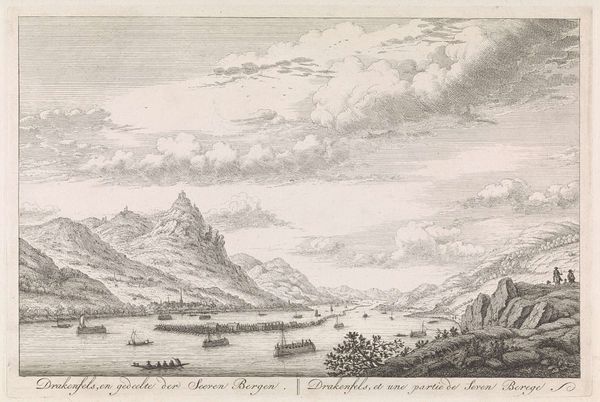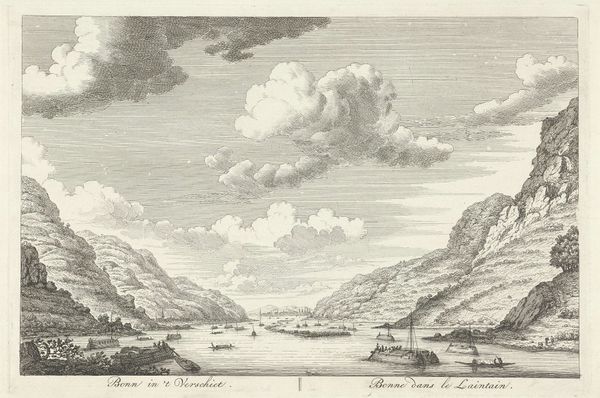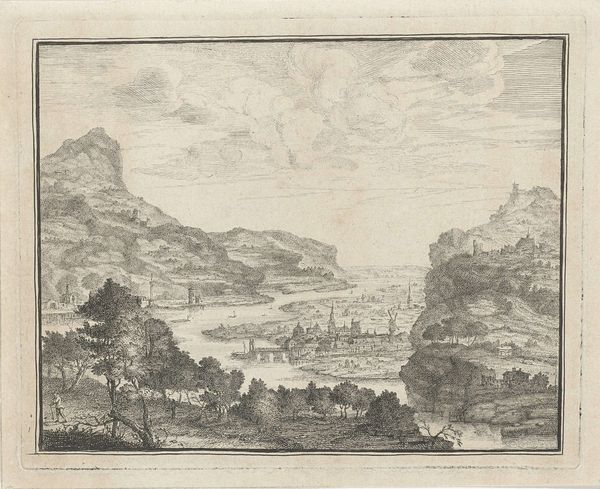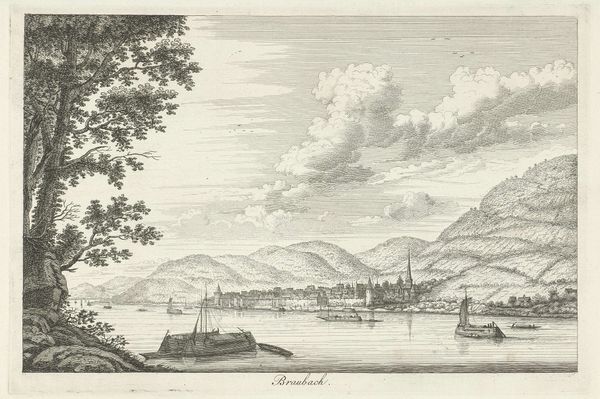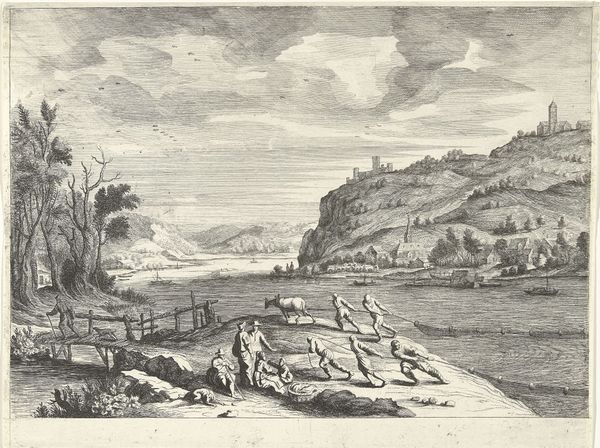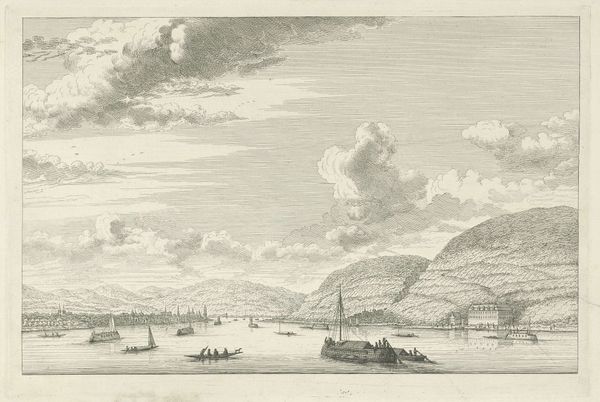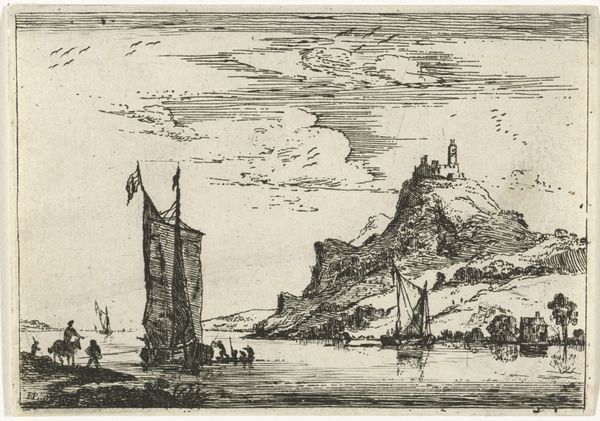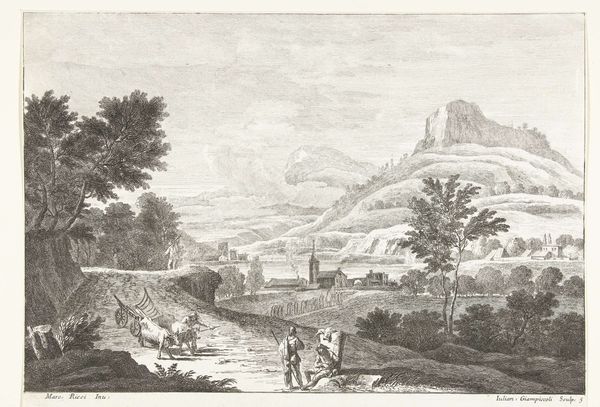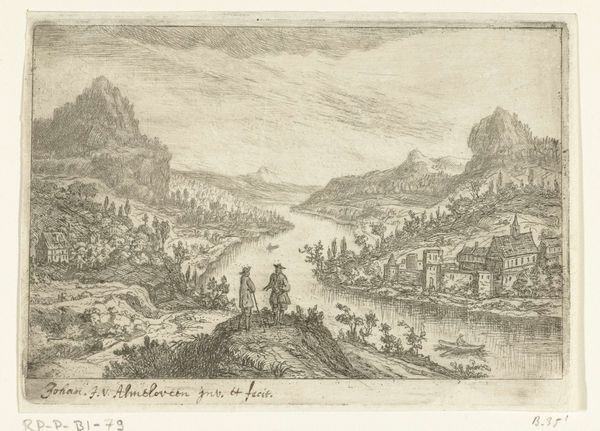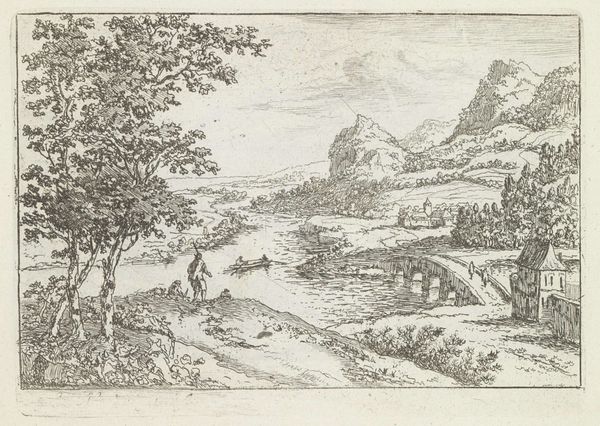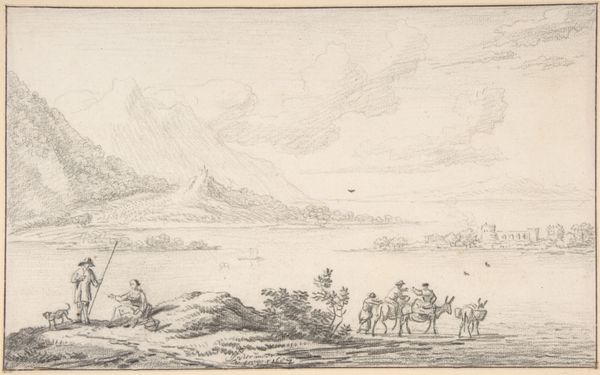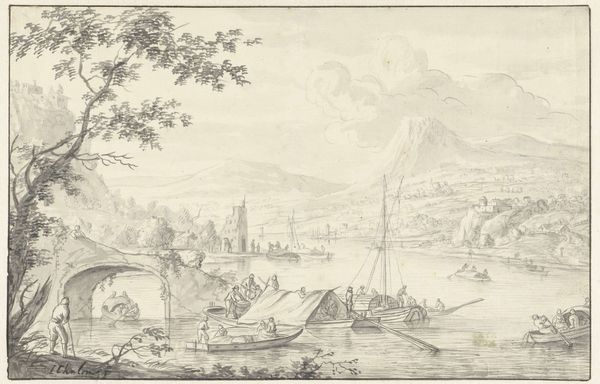
#
mechanical pen drawing
#
pen illustration
#
pen sketch
#
old engraving style
#
river
#
personal sketchbook
#
sketchwork
#
pen-ink sketch
#
mountain
#
pen work
#
sketchbook drawing
#
storyboard and sketchbook work
Dimensions: height 229 mm, width 343 mm
Copyright: Rijks Museum: Open Domain
Curator: Welcome. Here we have Hendrik de Leth's "Drachenfels, gezien vanaf de Rijn", created around 1767. It’s a wonderfully detailed pen drawing depicting a scene along the Rhine. Editor: It’s really captivating! The delicacy of the lines, the almost monochrome palette... it has this strange feeling of both grandeur and melancholy. There's a real sense of scale, emphasized by the tiny figures along the shore, which really heightens the impact of the landscape. Curator: Yes, the use of line work is quite remarkable. De Leth expertly uses varied densities and thicknesses to define forms and create a sense of depth. You can also see, culturally, how landscape was taking hold as a prominent subject in art, mirroring a growing appreciation for nature within Dutch society. Editor: I'm curious about the viewpoint. It almost feels romanticized, framing the scene as if we are privileged observers. There’s an interplay here, a certain tension between nature's sublimity and humankind's efforts to navigate and perhaps even control it via transportation on the river. And are those castle ruins at the top? A clear nod to the past and power. Curator: Indeed. The ruined castle on Drachenfels holds a particular symbolic weight; you find these structures appear over and over, visual reminders of histories and narratives interwoven into the landscape itself. De Leth's artistry helps transmit collective ideas about the sublime but also reflects social conditions surrounding how landscape becomes understood. Editor: Thinking about the boats and the figures populating the riverside, this vista, even with the dramatic mountain, becomes infused with a certain socioeconomic presence, doesn’t it? Transportation of goods, exchange, movement... a vibrant ecosystem existing below the looming castle ruins. Who did he produce work for, do we know? What statements was he hoping to produce about the area? Curator: De Leth’s background in cartography suggests he likely made art available for those involved in travel and trade—consumers deeply implicated within imperialist projects. His imagery undoubtedly helped shape views about nature's availability, but also the value of historic sites at this stage. His illustrations, in effect, helped manufacture social meanings through commercial images. Editor: Absolutely, images circulating through growing commercial channels become the grounds upon which both experiences and knowledge become exchanged. Well, it's certainly provided me a good bit to contemplate. I'll be pondering those tiny figures on the shoreline for some time. Curator: A fantastic set of reflections indeed!
Comments
No comments
Be the first to comment and join the conversation on the ultimate creative platform.
